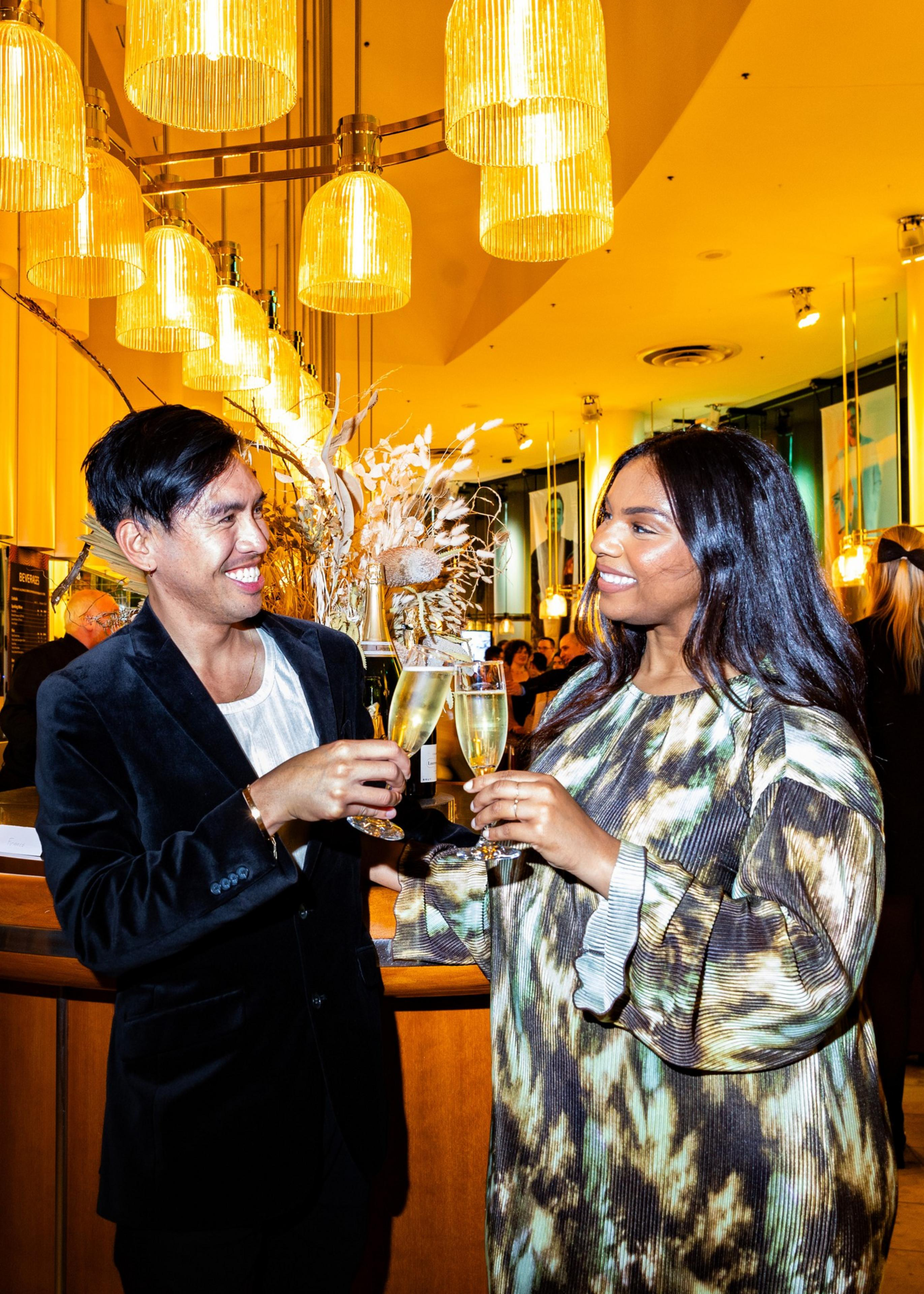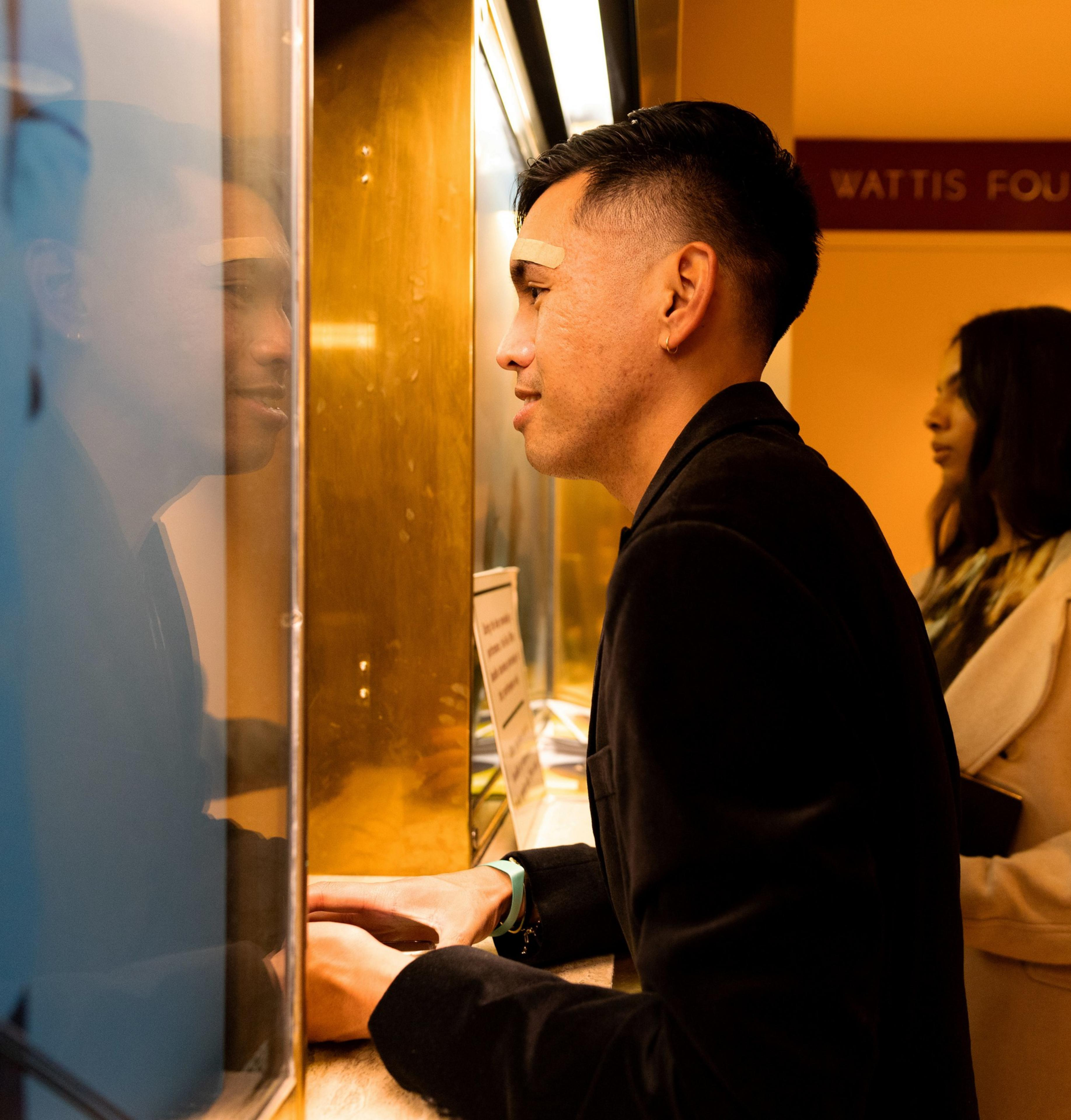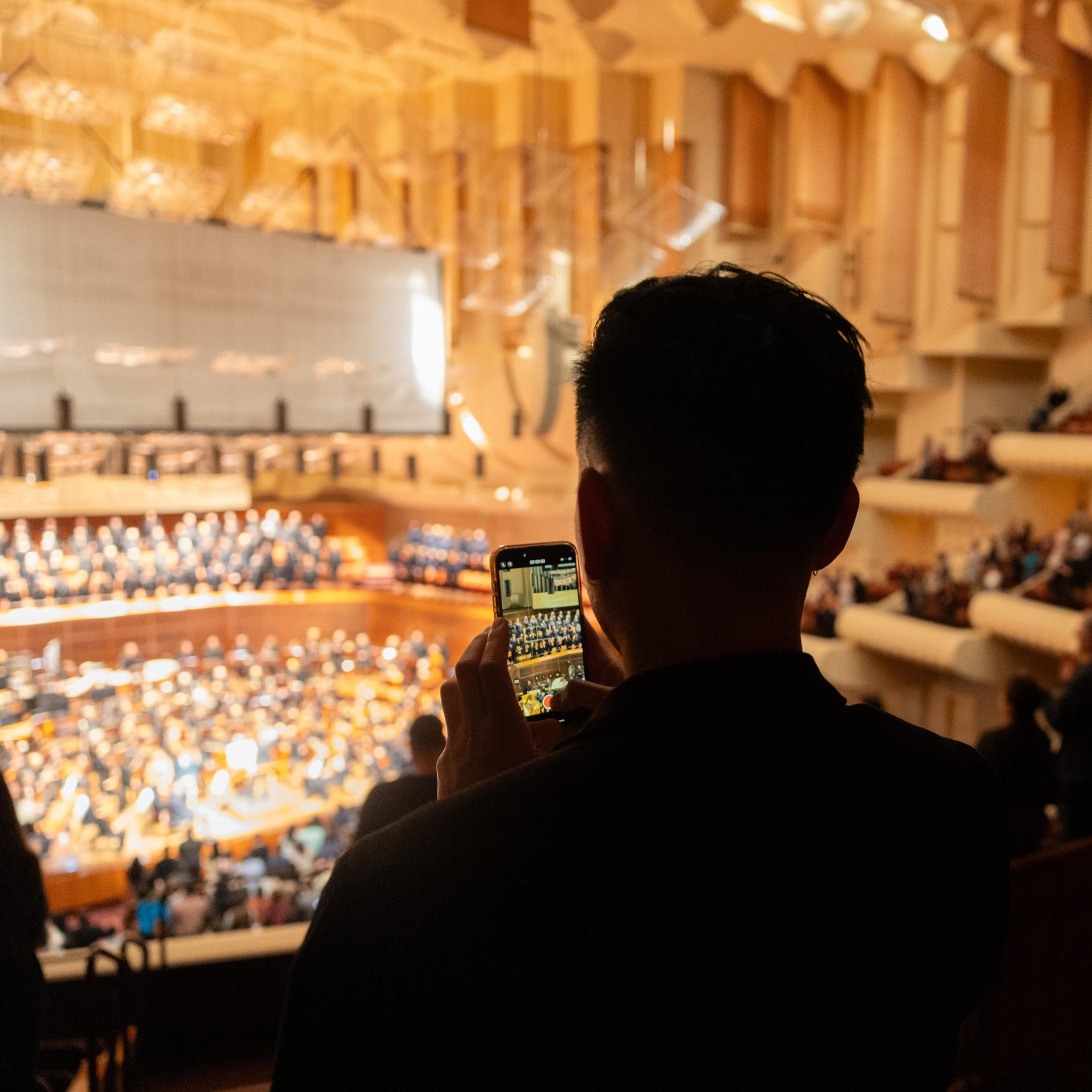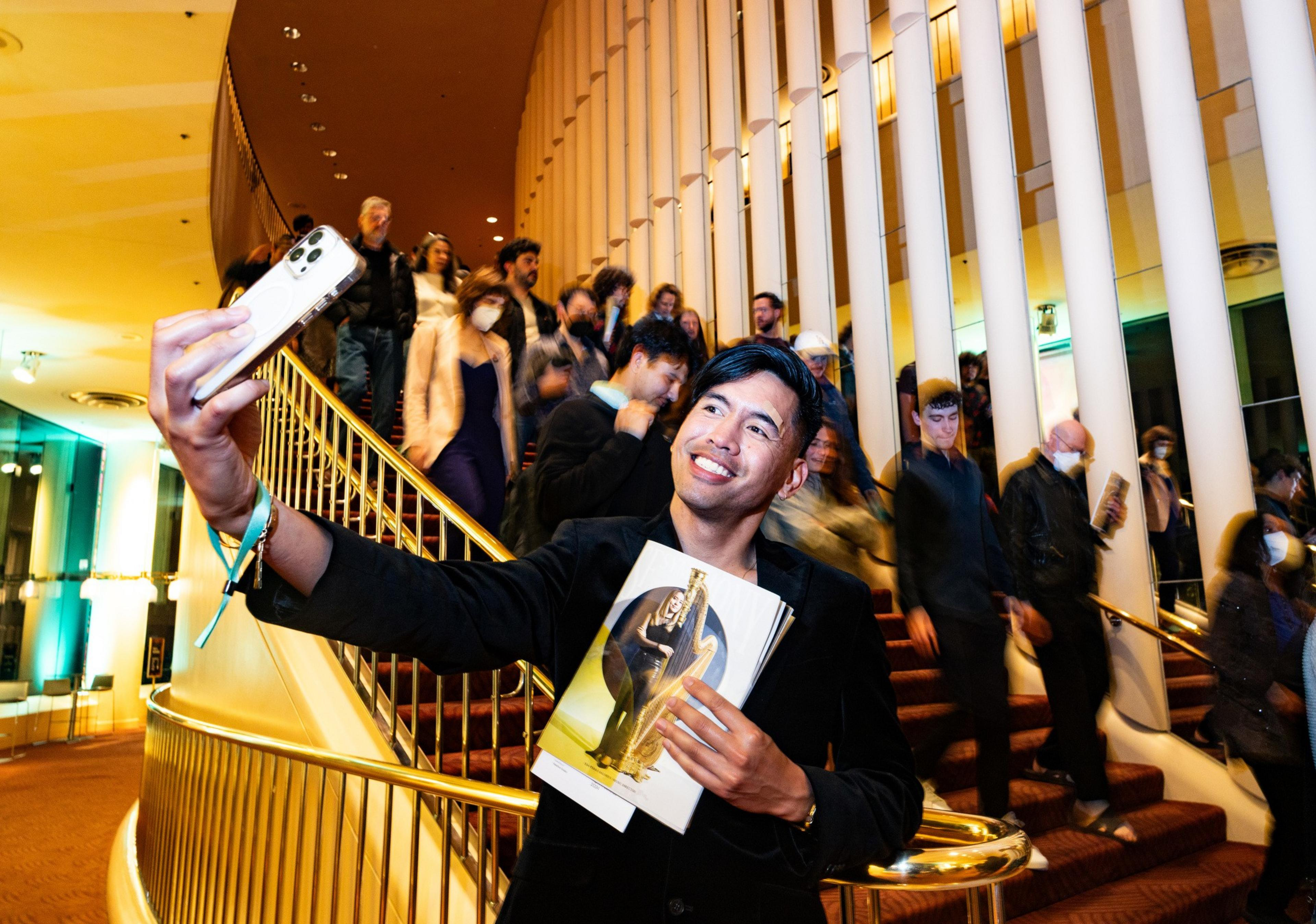Like many cash-strapped 20-somethings living in expensive urban areas, 28-year-old San Francisco influencer Andrew De Los Santos—aka @andrewtourssf (opens in new tab)—felt that sipping champagne at the opera was something for 40-year-olds with three companies to their names, plenty of guap to drop (opens in new tab) and a tux that they could pull of their closets on a whim.
That was until he received an invitation from a digital media agency to bring his influencing skills to the San Francisco Opera. De Los Santos soon learned that for the same price as a fancy cocktail from a rooftop bar he—and, potentially, his more than 40,000 followers across Instagram and TikTok—could enjoy an entire evening of La Traviata in a regal concert hall. Maybe the opera—including that champagne in an opera box—wasn’t so unapproachable after all.
While tickets to the opera can run to $400 or more, there are less sky-high price points that Gen Zers can stomach.
“$26 is the most, like, entry-level ticket, right?” he said. “And you pay that much for a drink with tip and tax.”
Since then, De Los Santos has expanded his repertoire of Instagram reels and TikToks from regular bars and restaurants to highlight nights out at SF Jazz (opens in new tab) and heady, multisensory concerts at the San Francisco Symphony (opens in new tab)—adding more variety and sophistication to his posts.

“I just didn’t want to be that same basic person that just goes to the same bars and clubs all the time,” he said. “But these were tying in the beauty of culture and other ways to show San Francisco, and I just really grew to love it.”
Fine arts organizations are realizing the potential of cultivating new audiences through influencers like De Los Santos. They’ve begun courting him with tickets or even paying him outright to work his viral magic on some of the city’s most rarefied auditoriums and performance halls.
De Los Santos is hardly alone. From dreamy walkthroughs of the de Young (opens in new tab) to “fun things to do in the city”-style (opens in new tab) videos, local arts organizations are starting to talk like the kids on TikTok—and hoping that they might lure the chronically online generation and its millennial cousins to their IRL galleries and orchestra halls. In other words, ceremonious unboxing reels (opens in new tab) and “come with me”-style TikToks (opens in new tab) are no longer the only terrain for obsessive tech heads or picture-perfect lifestyle vloggers.
Pay-to-play
Institutions like the San Francisco Opera have wide name recognition, but what they lack are patrons with comparatively few gray hairs. How best to attract new audiences is a perennial question and the main reason why Kari Lincks Coomans turned her blog Red Curtain Addict (opens in new tab) into an AI-powered online performing arts recommendation platform in 2020. Connecting Bay Area arts organizations with local influencers, her agency helps tap into new demographics through creative content collaborations.
Coomans leaned into creating influencer marketing campaigns for the brand (opens in new tab) and her clients in 2021 after working on successful user-generated campaigns with Pottery Barn Teen under Williams Sonoma and seeing how this type of marketing could help arts organizations grow their followings after the pandemic.


Red Curtain Addict has worked with several arts organizations in the Bay Area, such as the San Francisco Opera and Cal Performances, to initiate and oversee their marketing campaigns from start to finish. Coomans’ rates start at $3,500 to run influencer campaigns, whose creative budgets can range from $2,000 to $10,000. While the influencer marketing budgets for arts organizations are often much smaller than those of big brands like L’Oreal or Pinterest, Coomans said they’re starting to go up, with some clients even tripling such line items over the last few years.
“Now, more than ever, arts [organizations] are looking for new and innovative ways to reach these new audiences,” Coomans said. “We’re helping them pioneer and try [it] for the first time. … They’re becoming trailblazers.”
So cue reels by mommy vloggers that plug SF Opera’s 2024-2025 season (opens in new tab) for date night and POV-style videos of mashups of electronic and classical music (opens in new tab) in a historic bank to sell tickets.
De Los Santos is one of Red Curtain Addict’s top-performing influencers for its campaigns, charging anywhere from $500 to $2,000 for a package of posts—or a little less in the case of arts nonprofits, usually around $1,000. He’s a bit of a fanboy now, collecting programs from every show he sees. But at the end of the day, he doesn’t just think of himself as an ambassador for the arts but also a businessman.
“I’m doing this full-time, so I treat everything like a job,” he said.
The perks pay enough
Not all these Instagram or TikTok posts are pay-to-play. Several influencers said that they often post arts-related content for free—just because they’re passionate ballet “bunheads” or theater geeks and want to boost up San Francisco’s arts scene anyway. But the freebies don’t hurt.

When inviting content creators to come through their doors, fine arts museums often comp admission for influencers to exhibitions—with no expectation to post, they say—and may sweeten the deal with merch from the museum store, a catalog from the exhibition, a private preview of the galleries or a once-in-a-lifetime opportunity to, say, shake hands with famed Japanese pop artist Takashi Murakami.
Last summer, the Asian Art Museum held a small meet-and-greet with Murakami ahead of his hugely popular solo exhibition, inviting a select number of influencers. One reel from the event, posted by San Francisco style and travel vlogger Ally Chen (opens in new tab), garnered more than 12,380 likes, going “semi-viral,” in the words of Asian Art Museum Digital Marketing Coordinator Alisa Wong.
“As a nonprofit museum, we don’t always have a huge budget,” said Wong, who noted that the museum spends about 1%-2% of its overall marketing on content creators, while the remainder goes to a mix of TV and radio broadcasts, paid social, on-site marketing materials, and Muni ads and other print media. “We try to look for ways that we can offer them kind of like a unique and fun experience,” she added. “All the artists aren’t going to be Murakami, for example, but even being able to meet artists in person—that’s what we consider a unique experience.”
Former studio art major Kara Harms runs the San Francisco-based lifestyle brand Whimsy Soul (opens in new tab), posting about exhibitions at SFMOMA and the de Young on her social media channels for free. For her, these exclusive experiences are worthwhile because they’re unique—and they can boost her follower count.
“Kara, 15 years ago, would have thought it would be so cool to get invited to a private experience by a curator of modern art museums, so I often do that for her, too,” Harms said. Such posts, like one about walking through an influencer-only showing of the de Young’s (opens in new tab) Fashioning San Francisco exhibition, recently earned her 500 followers. They perform very well, she said, “which is another reason I don’t mind doing them for free.”
For the aspirationally inclined, posting about their wanderings at an art museum or excursions to the symphony could also transform their passion for the arts and influencing into a full-time career—or, at least, a gig that’s steady or lucrative. And for some influencers, there are even more bonus benefits to being seen at the ballet or opera by millions.
For Lillian Phan (opens in new tab), executive vice president of sales and marketing for the Conservatory at One Sansome, which houses the upscale restaurant and cocktail lounge Holbrook House, social media influencing not only helps to build up her personal brand as a hospitality expert—she’s perhaps best known for her turn as talent and producer on the Food Network show (opens in new tab)Chef Dynasty: House of Fang (opens in new tab)—it also is a vehicle for drumming up new business for her other ventures.
“I don’t just go there and attend; I network, and I mingle, and I make connections,” Phan said. “It’s a huge networking opportunity.”
Small budgets, Big ROI
For arts institutions, these exchanges can be worth their weight in gold.
Wong said that due to the Asian Art Museum’s success with influencer marketing, she hopes to up the organization’s spend on content creators to 4% or 5% of the museum’s overall marketing budget.
And while influencer marketing only comprises a small percentage of the San Francisco Opera’s overall marketing budget, Tyler Cervini, the opera’s manager of digital and acquisition marketing, said that the impact of influencers on drawing in new audiences is almost beyond measure.

Case-in-point: Tickets through the opera’s $10 Dolby program (opens in new tab) for Bay Area residents who haven’t purchased tickets to a mainstage opera in the past three years sold out last year soon after several content creators posted about the initiative (opens in new tab).
“Everybody led with this $10 ticket to the opera that really makes coming to the opera super-accessible to anybody,” Cervini said. “It was really cool to see how that happened.”
But more than the arrangement being mutually beneficial, arts institutions like the San Francisco Opera and SF Jazz say that influencer marketing also offers a fresh approach to arts promotion campaigns that grabs the attention of younger audiences in ways that traditional media and marketing campaigns just don’t.
Big billboard campaigns may draw eyeballs on the highway, news articles may earn prestige and email blasts may be effective for some diehard subscribers, but how to lure social media-obsessed generations to Tosca remains a struggle and an open question.
When competing against algorithms that feed users eye-candy-filled restaurant and bar reviews, “it takes a little bit more than just kind of telling someone the title of the opera and inviting them to come,” Cervini said.
Unlike traditional print write-ups, influencer videos that share their perspective of going to the opera—often for the first time—show a 360-degree view of what the opera looks, sounds and feels like in a visually engaging but relatable way.

“It’s almost like a new sort of review for us,” Cervini said. “It just like kind of brings that element of humanity to [the opera], where you know, it’s almost like talking to your friend.”
After doubling its Instagram traction to over 100,000 followers over the past year, SF Jazz plans to invite a handful of influencers to its gala on May 9. As an organization celebrating 41 years, “we’re already looking towards the next 40 years to usher in new patrons of all demographics, of all ages,” said Justin Esposito, SF Jazz’s social media and content strategist.
And guess what? De Los Santos will be there.
